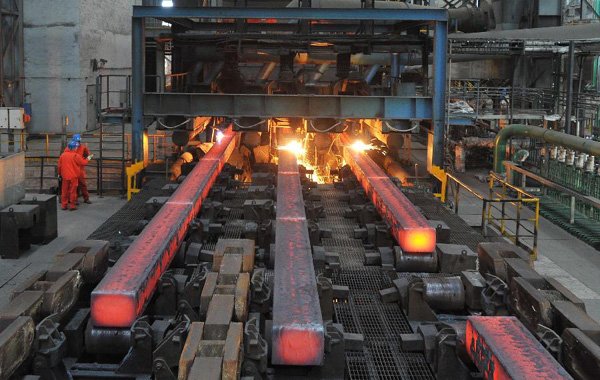Real state crisis in China leads to shutting down of steel plants due to low demand, Reports suggests declination upto 5% this year


China, once the largest exporter in the world and the emerging third-world economy has been facing a real estate crisis that has led to the shutting down of China’s steel industry. The steel industry is on the brink of shrinking as the property crisis threatens supply.
This year, the real estate crisis has grown significantly, enveloping everyone from banks to developers, prompting Beijing to scale back its growth plans. Steel mills are particularly sensitive to the downturn, which has also affected iron ore prices, and miners from Australia to Brazil and produced more than a billion tons of steel last year, or about half of the world’s output.
Recently, Li Ganpo, founder and chairman of Hebei Jingye steel group, expressed concern stating that a third of China’s steel mills would file for bankruptcy during the crisis that is estimated to be there for at least 5 years. He stated, “The whole sector is losing money and I can’t see a turning point for now.” At least one-third of China’s steel demand comes from the real estate industry.
The picture is getting worse after more than a year of property misery as the government resists major bailouts and maintains strict debt regulations. The demand is expected to decline by 5% this year, as per the report of Goldman Sachs Group Inc. The steel purchasing managers index for July plunged to its lowest reading since 2008.
Beyond the current crisis, the sector faces significant obstacles as the development model that has supported China’s economy for decades is beginning to falter. President Xi Jinping is hesitant to invest in infrastructure at the levels and with the financial stimulation that the sector needed to recover from the Great Financial Crisis and the decline in the real estate market in 2015–2016.
Leland Miller, the CEO of China Beige Book International, which tracks the steel industry, declared that “this time is absolutely different.” Key commodities like steel no longer have the advantage of limitless credit access since the property has lost its position as the primary development driver.
The massive inventory of unfinished houses, which has been brought to light by a recent wave of mortgage boycotts, is steel’s main short-term challenge. Construction steel prices have also plummeted, with rebar prices this week reaching a two-year low. Rebar is a twisted steel rod used to reinforce concrete. The output has decreased to its lowest level since Mysteel data began keeping track of this in 2015.
Xiao Zunhu, the chairman of state-owned Hunan Valin Steel Co., stated at an industry gathering last week in Beijing that “demand is sliding fast.” Speaker after speaker forewarned of challenging times to come. According to Chen Shaohui, vice president at Jiangsu Shagang Group, at the same conference, markets “would remain challenging and tough” this half and stimulus measures need time to take impact.
Iron ore, a crucial component in the production of steel, is now seeing a drop in demand. Tuesday saw a third straight day of losses for futures in Singapore, which are now down more than a third from their peak in early March. Liberum Capital reiterated its sell recommendations for the miners’ BHP Group Ltd. and Rio Tinto in a report on Tuesday, stating that China’s steel industry is in “severe contraction on all fronts.”
There might not be much room for adjustment for steelmakers to reduce output. According to executives from four producers who asked not to be identified because the topic is sensitive, local governments are pressuring mills to continue activity in order to minimize weakness in economic data.
Steel mills were formerly seen as the leaders in China’s economic development, with some developing from small-scale rural foundries to enormous conglomerates. Even if real estate activity should eventually cease declining, it is unlikely that it will see the kind of booms that have boosted Asia’s largest economy in recent years.
DISCLAIMER: The author is solely responsible for the views expressed in this article. The author carries the responsibility for citing and/or licensing of images utilized within the text.
